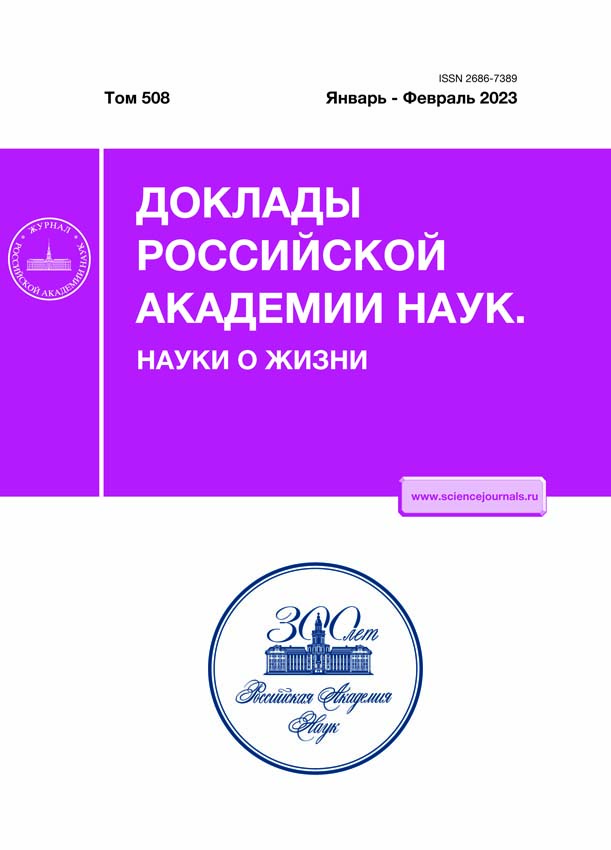SYNERGISTIC EFFECT OF THE COMBINED ACTION OF TARGETED AND PHOTODYNAMIC THERAPY ON HER2-POSITIVE BREAST CANCER
- Autores: Balalaeva I.V.1, Krylova L.V.1, Karpova M.A.1, Shulga A.A.2, Konovalova E.V.2, Guryev E.L.1, Deyev S.M.2,3
-
Afiliações:
- Lobachevsky State University of Nizhny Novgorod
- Shemyakin-Ovchinnikov Institute of Bioorganic Chemistry, Russian Academy of Sciences
- I.M. Sechenov First Moscow State Medical University
- Edição: Volume 508, Nº 1 (2023)
- Páginas: 48-52
- Seção: Articles
- URL: https://rjpbr.com/2686-7389/article/view/651150
- DOI: https://doi.org/10.31857/S268673892270007X
- EDN: https://elibrary.ru/MUGOWP
- ID: 651150
Citar
Texto integral
Resumo
Development of combined schemes for the treatment of oncological diseases is a promising strategy to improve the effectiveness of antitumor therapy. This paper shows the fundamental possibility of multiplying the antitumor effect by combining targeted and photodynamic therapy. It has been demonstrated that sequential treatment of HER-2 positive breast cancer cells with the targeted toxin DARPin-LoPE and the photoactive compound Photodithazine leads to a synergistic enhancement of their effect. In the future, this approach is intended to achieve the maximum therapeutic effect while minimizing the risks of negative side effects.
Sobre autores
I. Balalaeva
Lobachevsky State University of Nizhny Novgorod
Autor responsável pela correspondência
Email: irin-b@mail.ru
Russian Federation, Nizhny Novgorod
L. Krylova
Lobachevsky State University of Nizhny Novgorod
Email: biomem@mail.ru
Russian Federation, Nizhny Novgorod
M. Karpova
Lobachevsky State University of Nizhny Novgorod
Email: biomem@mail.ru
Russian Federation, Nizhny Novgorod
A. Shulga
Shemyakin-Ovchinnikov Institute of Bioorganic Chemistry, Russian Academy of Sciences
Email: biomem@mail.ru
Russian Federation, Moscow
E. Konovalova
Shemyakin-Ovchinnikov Institute of Bioorganic Chemistry, Russian Academy of Sciences
Email: biomem@mail.ru
Russian Federation, Moscow
E. Guryev
Lobachevsky State University of Nizhny Novgorod
Email: biomem@mail.ru
Russian Federation, Nizhny Novgorod
S. Deyev
Shemyakin-Ovchinnikov Institute of Bioorganic Chemistry, Russian Academy of Sciences; I.M. Sechenov First Moscow State Medical University
Autor responsável pela correspondência
Email: biomem@mail.ru
Russian Federation, Moscow; Russian Federation, Moscow
Bibliografia
- Harbeck N., Penault-Llorca F., Cortes J., et al. // Nature Reviews Disease Primers. 2019. V. 5. № 66.
- Gerber D.E. // American Family Physician. 2008. V. 77. № 3. P. 311–319.
- Padma V.V. // Biomedicine (Taipei). 2015. V. 5. № 4. P. 19.
- Iqbal N., Iqbal N. // Molecular Biology International. 2014.
- Higgins M.J., Baselga J. // Journal of Clinical Investigation. 2011. V. 121. № 10. P. 3797–3803.
- Tolmachev V.M., Chernov V.I., Deyev S.M. // Russ. Chem. Rev. 2022. V. 91. RCR5034.
- Sokolova E.A., Shilova O.N., Kiseleva D.V., et al. // International Journal of Molecular Sciences. 2019. V. 20. № 10.
- Shapira A., Benhar I. // Toxins (Basel). 2010. V. 2. № 11. P. 2519–2583.
- Sabnis A.J., Bivona T.G. // Trends in Molecular Medicine. 2019. V. 25. №3. P. 185–197.
- Plana D., Palmer A.C., Sorger P.K. // Cancer Discovery. 2022. V. 12. № 3. P. 606–624.
- Boshuizen J., Peeper D.S. // Molecular Cell. 2020. V. 78. № 6. P. 1002–1018.
- Agostinis P., Berg K., Cengel K.A. et al. // CA: A Cancer Journal for Clinicians. 2011. V.61. №4. P. 250–281.
- Shramova E.I., Chumakov S.P., Shipunova V.O., et al. // Light Sci. Appl. 2022. V. 11. № 1. P. 38.
- Mishchenko T., Balalaeva I., Gorokhova A., et al. // Cell Death & Disease. 2022. V. 13. № 5. P. 455.
- Weldon J.E., Pastan I. // The FEBS Journal. 2011. V. 278. № 23. P. 4683–4700.
- Shilyagina N.Y., Plekhanov V.I., Shkunov I.V. et al. // Sovremennye Tehnologii v Medicine. 2014. V. 8. P. 15–24.
- Guryev E.L., Volodina N.O., Shilyagina N.Y., et al. // Proceedings of the National Academy of Sciences. 2018. V. 115. № 39. P. 9690–9695.
- Chu P.L., Shihabuddeen W.A., Low K.P., et al. // Photodiagnosis and Photodynamic Therapy. 2019. V. 27. P. 367–374.
- Bhuvaneswari R., Ng Q.F., Thong P.S., Soo K.C. // Oncotarget. 2015. V. 6. № 15. P. 13487–13505.
Arquivos suplementares













